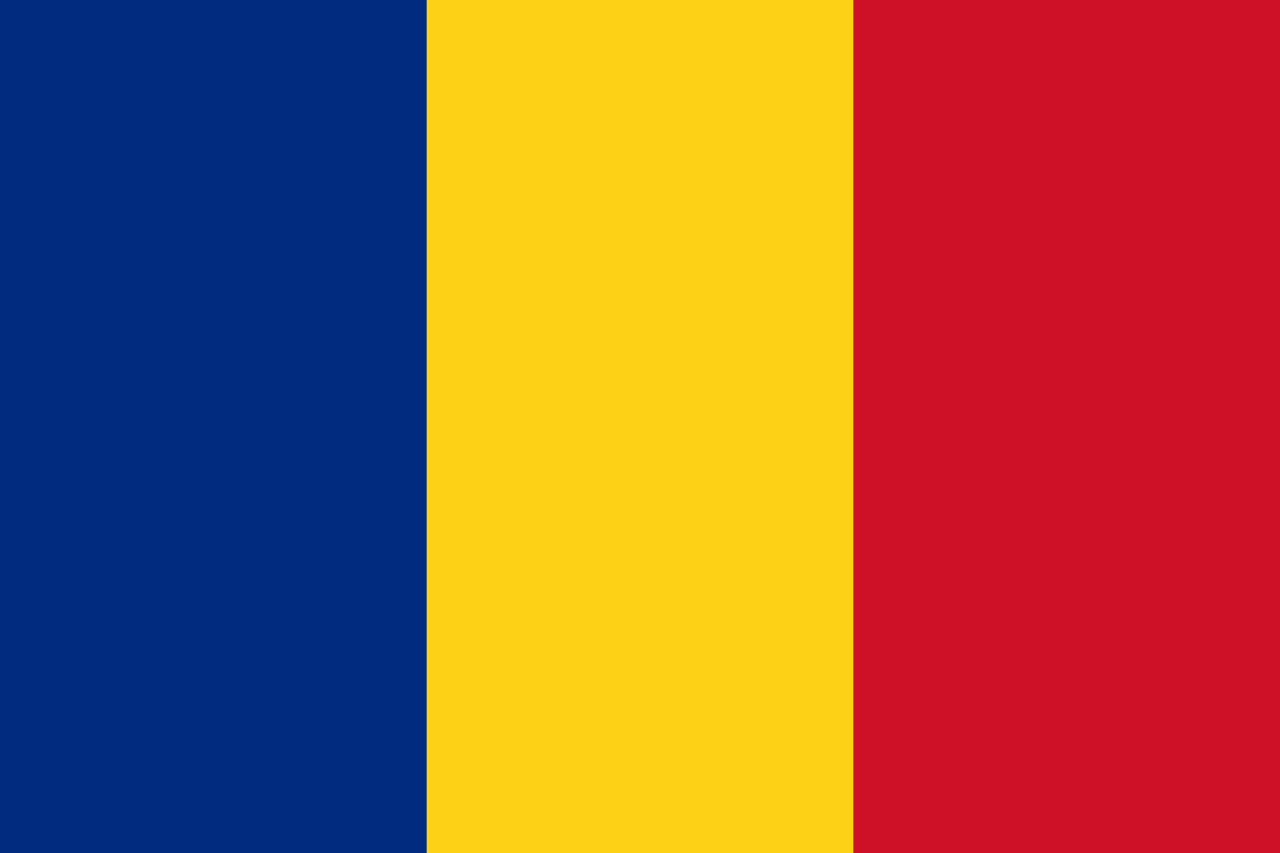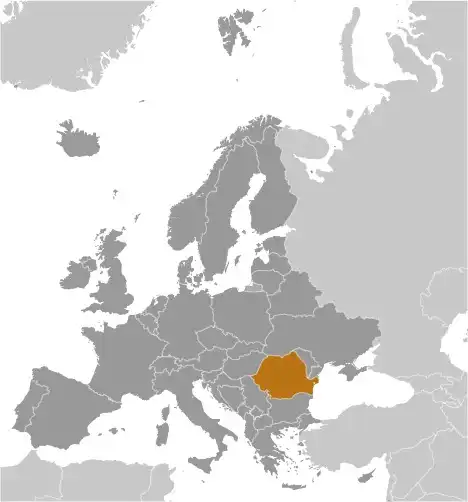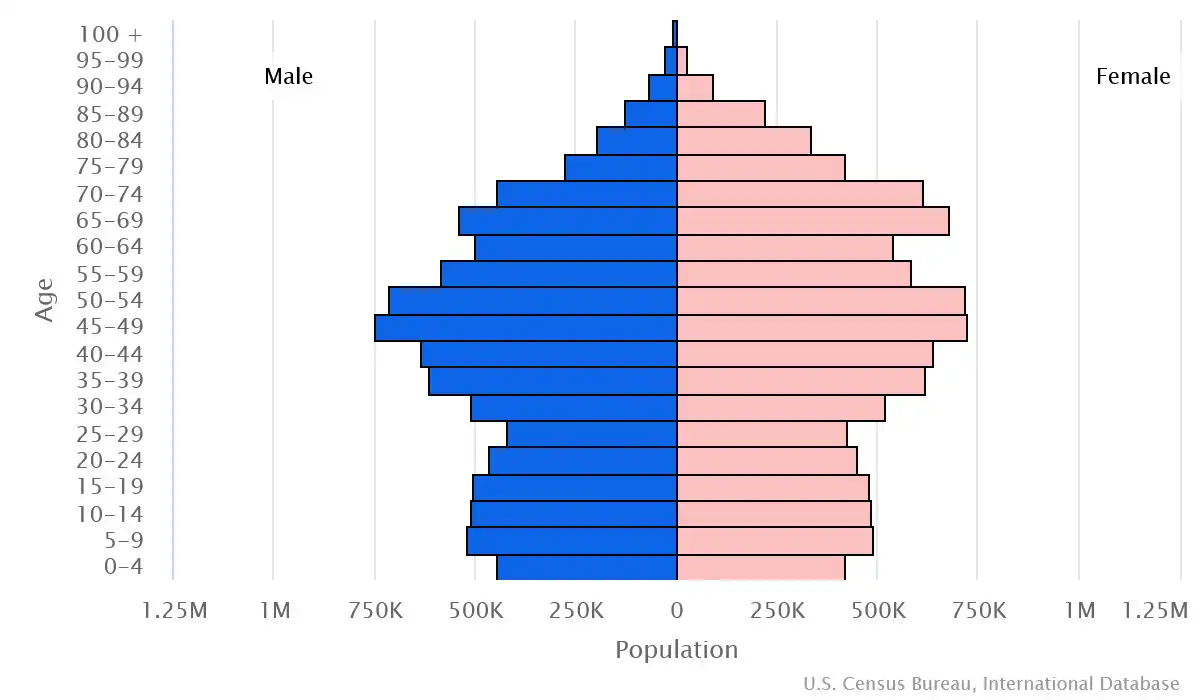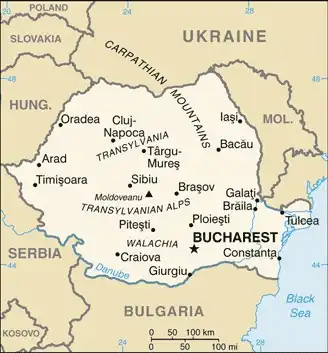
Romania Country Profile
Key Facts of Romania

| Government type: | semi-presidential republic |
| Capital: | Bucharest |
| Languages: | Romanian (official) 91.6%, Hungarian 6.3%, Romani 1.2%, other 0.7% (2021 est.) |
Romania Demographic Data
Ethnic Groups in Romania(2021 est.)
Religious Groups in Romania (2021 est.)
Age pyramid of Romania

Romania Economy Statistics
Economic overview of Romania
high-income EU member economy; joined Schengen area as of March 2024; euro membership delayed over convergence criteria; persistent inflation but recovery driven by consumption and EU-funded investments; skilled labor shortage; regional economic disparities; fiscal reforms to address rising deficits
Romania Real GDP (purchasing power parity) in Billion $
Romania Real GDP per capita in $
Romania's Exports & Imports in billion $
Top 5 Import Partnerin 2022 (43%) of Romania
Top 5 Import Commodities in 2022 of Romania
- crude petroleum 🛢️
- vehicle parts/accessories 🛠️🚗
- refined petroleum ⛽
- packaged medicine 💊
- cars 🚗
Top 5 Export Partnerin 2022 (46%) of Romania
Top 5 Export Commodities in 2022 of Romania
- vehicle parts/accessories 🛠️🚗
- cars 🚗
- insulated wire 🔌
- refined petroleum ⛽
- wheat 🌾
Geography of Romania
Map of Romania

Land and Water Distrubtion of Romania
Natural Resources of Romania
- petroleum (reserves declining) 🛢️
- timber 🌲
- natural gas 💨
- coal ⚫
- iron ore ⛓️
- salt 🧂
- arable land 🌱
- hydropower 💧⚡
Climate inRomania
temperate; cold, cloudy winters with frequent snow and fog; sunny summers with frequent showers and thunderstorms
History of Romania - a Summary
The principalities of Wallachia and Moldavia -- for centuries under the control of the Turkish Ottoman Empire -- secured their autonomy through the Treaty of Paris in 1856. They were de facto linked in 1859 and formally united in 1862 under the new name of Romania. The country joined the Allied Powers in World War I and subsequently acquired new territories -- most notably Transylvania -- that more than doubled its size. In 1940, Romania allied with the Axis powers and participated in the 1941 German invasion of the USSR. Three years later, overrun by the Soviets, Romania signed an armistice. The post-war Soviet occupation led to the formation of a communist "people's republic" in 1947 and the abdication of the king. The decades-long rule of dictator Nicolae CEAUSESCU, who took power in 1965, and his Securitate police state became increasingly oppressive and draconian through the 1980s. CEAUSESCU was overthrown and executed in late 1989. Former communists dominated the government until 1996 when they were swept from power. Romania joined NATO in 2004, the EU in 2007, and the Schengen Area for air and sea travel in 2024.
